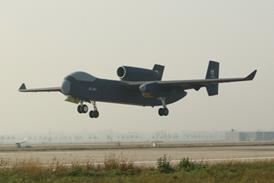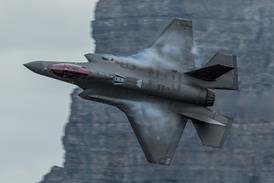The full-sized wing developed and built for AeroVironment's unmanned, high-altitude Global Observer has successfully completed wing load testing, the company says.
The tests demonstrate the integrity of the wing and validate the design of the 53m (175ft) all-composite wing, which comes in five sections and is designed to maximize wing strength while minimizing weight for extremely long-endurance flights.
The structural integrity of the wing was tested by applying loads to the wing that approximate the maximum loads Global Observer is designed to withstand during normal flight, turbulence and manoeuvres.
| |
|---|
| ©AeroVironment |
Four simulated test sorties were performed on the wing with loads being applied in both positive and negative directions. The wing successfully passed all tests, AeroVironment says.
Tests were performed by the Department of Defense, NASA and AeroVironment team at the Flight Loads Laboratory at NASA's Dryden Flight Research Centre at Edwards AFB in California.
The liquid hydrogen-powered Global Observer is designed to fly above weather and conventional aircraft at between 55,000 and 65,000ft for five to seven days at a time, providing communications relays to a 965km (600mi) diameter circular area, the equivalent of more than 725,196km² (280,000mi²) of coverage, AeroVironment says.
"Right now there is a significant need and market demand for persistent capability that would enable uninterrupted communications relay and reconnaissance," said Steven Gitlin, AeroVironment's vice president of marketing and strategy during a presentation at the Morgan Keegan Security, Safety and Defense Conference 11 August 11 in New York City.
The demonstrator UAV, currently in the third year of testing, has also undergone ground and taxi tests as well as taken a "short hop" lifting off the ground briefly during taxi testing.
"It actually can fly," Gitlin says.
Source: Flight International
























